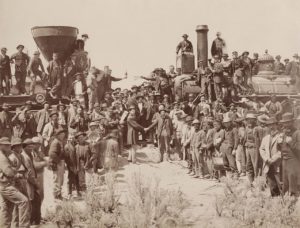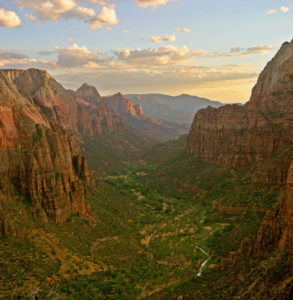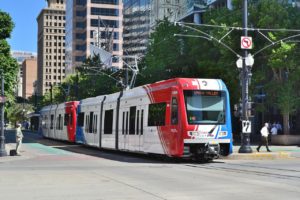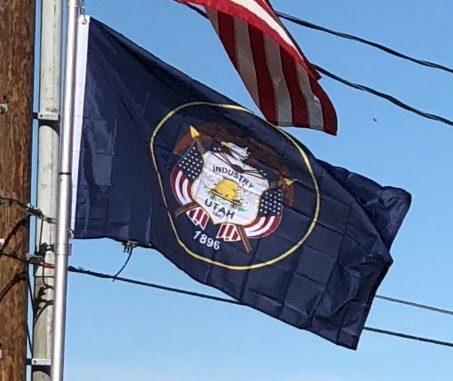On May 10, 1869, the First Transcontinental Railroad was completed at Promontory Summit, north of the Great Salt Lake. The railroad brought increasing numbers of people into the territory and several influential business-people made fortunes there.

In the 1890 Manifesto, the LDS Church banned polygamy. When Utah applied for statehood again, it was accepted. One of the conditions for granting Utah statehood was that a ban on polygamy be written into the state constitution. This was a condition required of other western states that were admitted into the Union later. Statehood was officially granted on January 4, 1896.
20th Century:
Beginning in the early 20th century, with the establishment of such national parks as Bryce Canyon National Park and Zion National Park, Utah became known for its natural beauty. Southern Utah became a popular filming spot for arid, rugged scenes featured in the popular mid-century western film genre. From such films, most US residents recognize such natural landmarks as Delicate Arch and “the Mittens” of Monument Valley. During the 1950s, 1960s, and 1970s, with the construction of the Interstate highway system, accessibility to the southern scenic areas was made easier.

Since the establishment of Alta Ski Area in 1939 and the subsequent development of several ski resorts in the state’s mountains, Utah’s skiing has become world-renowned. The dry, powdery snow of the Wasatch Range is considered some of the best skiing in the world. Salt Lake City won the bid for the 2002 Winter Olympic Games, and this served as a great boost to the economy. The ski resorts have increased in popularity, and many of the Olympic venues built along the Wasatch Front continue to be used for sporting events. Preparation for the Olympics spurred the development of the light-rail system in the Salt Lake Valley, known as TRAX, and the re-construction of the freeway system around the city.

During the late 20th century, the state grew quickly. In the 1970s growth was phenomenal in the suburbs of the Wasatch Front. Sandy was one of the fastest-growing cities in the country at that time. Today, many areas of Utah continue to see boom-time growth. Management of transportation and urbanization are major issues in politics, as development consumes agricultural land and wilderness areas, with density of uses creating air pollution.
Geography:
Utah is known for its natural diversity and is home to features ranging from arid deserts with sand dunes to thriving pine forests in mountain valleys. It is a rugged and geographically diverse state that is at the convergence of three distinct geological regions: the Rocky Mountains, the Great Basin, and the Colorado Plateau.
One of Utah’s defining characteristics is the variety of its terrain. Running down the middle of the state’s northern third is the Wasatch Range, which rises to heights of almost 12,000 ft above sea level. In the state’s northeastern section, running east to west, are the Uinta Mountains, which rise to heights of over 13,000 feet. The highest point in the state, Kings Peak, at 13,528 feet lies within the Uinta Mountains.
